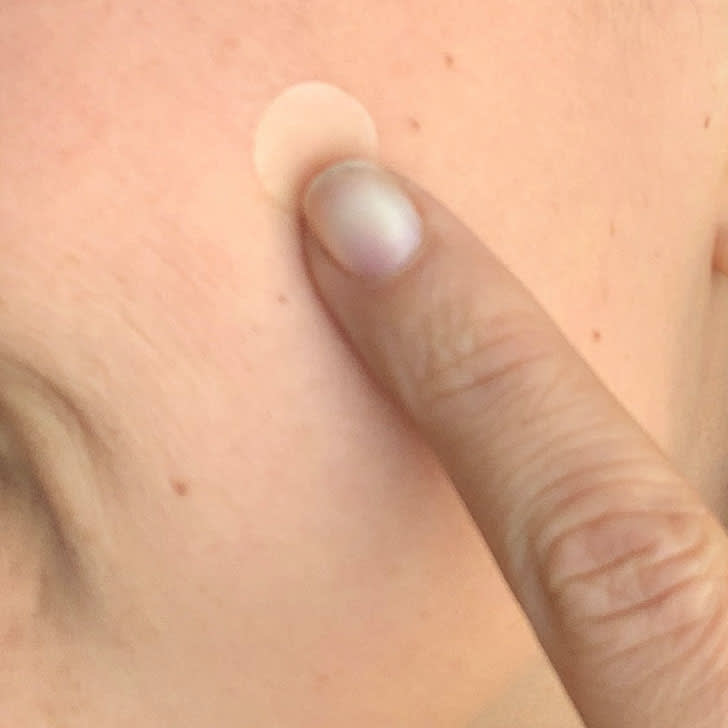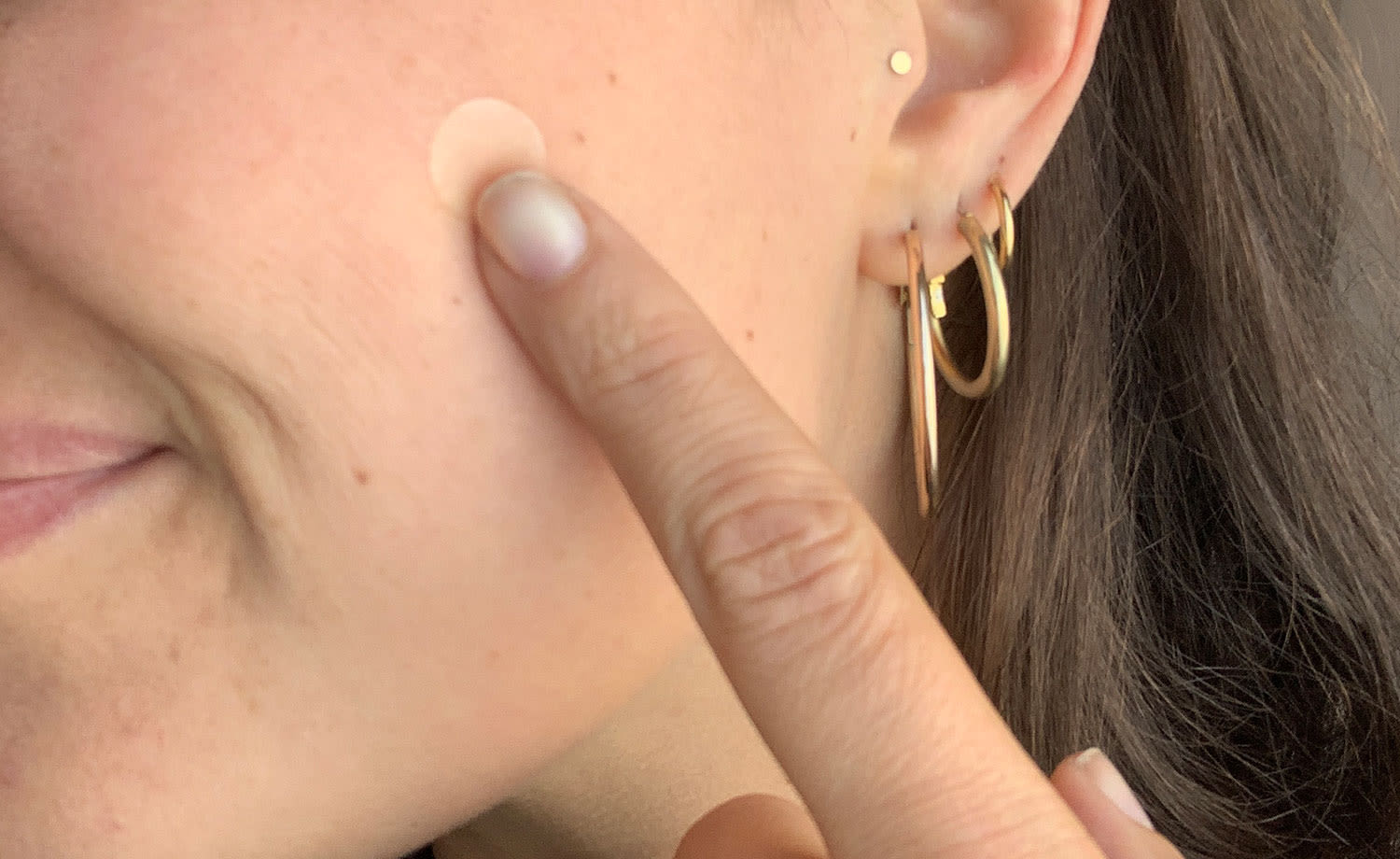Education
How to get rid of zits


SHARE
Education
How to get rid of zits
Medically reviewed by Vicky Davis, FNP
Written by Apostrophe Team
Last updated 11/3/2024
Waking up to find a new pimple can be seriously aggravating, especially if it’s a recurring problem you’ve been struggling with.
Once you get over that initial annoyance, your next thought is likely that you have to get rid of it.
But is it possible to get rid of zits fast? Well, maybe. If you’re armed with the right info, you may be able to banish that blemish.
Read on to learn more about what causes them and how you can get rid of zits quickly.
Why Zits Happen
Pimples pop up when a combination of sebum and dead skin cells build up and cause a blockage in your pores and hair follicles.
Sebum is an oil-like substance that is produced by your sebaceous glands to lubricate your skin and hair. It also helps protect your skin from bacteria and other potentially harmful substances in the environment.
But sometimes, an excess of sebum is produced.
So, what causes excess sebum? A variety of things. Hormone imbalances, such as the ones that occur during your period, can play a role. Genetic factors can also lead to acne breakouts. And environmental factors, like overwashing your skin or working out a lot, can also lead to breakouts.
Another culprit is dead skin cells. Naturally, your body sheds dead skin cells every 40 to 56 days as part of its process to renew and replace skin (also called epidermal turnover). When these dead skin cells mix with excess sebum, they can contribute to blocked pores and breakouts.
Using certain skincare or cosmetic products that contain heavy oils may also make you more prone to clogged pores and cystic acne.
Other lifestyle choices that can increase your odds of zits include smoking, sleeping with makeup on, and more.
Getting Rid of Zits
The good news: pimples may be ugly beasts, but they can be tamed.
In fact, there are a number of effective strategies you can employ to get rid of your acne as quickly as possible. Review them below:
Topical Treatments
Perhaps the most popular way of treating zits, topical treatments are applied on the skin and work by penetrating the zit to clear it up. The most common types of acne treatments are:
Benzoyl Peroxide: Removes dead skin cells that may be clogging pores and kills bacteria that cause breakouts. This acne treatment can be irritating to the affected skin, so, use it with caution.
Salicylic Acid: Reduces swelling and, like benzoyl peroxide, removes dead skin cells to allow the zit to clear up.
Retinoids: Unclog pores by preventing dead skin cells from building up and increasing the rate at which your skin cells regenerate.
Tretinoin: This prescription retinoid encourages your skin to shed dead skin cells that cause breakouts.
Clindamycin: A prescription antibiotic, clindamycin for treating acne stops bacteria from multiplying.
Azelaic Acid: Kills bacteria to clear up a zit and reduce inflammation.

PRESCRIPTION TRETINOIN
Target acne, dark spots, and signs of aging with this science-backed ingredient.
Alone, these ingredients can go a long way towards getting rid of a zit. Combine a few of these together and a topical can pack an even stronger punch.
Benzoyl peroxide and salicylic acid are often combined. Apostrophe also offers access to custom-compounded acne treatments that contain a variety of prescription ingredients like tretinoin and azelaic acid to get rid of dead skin cells, reduce inflammation and unclog pores.
Oral Medication
Sometimes, a healthcare professional may prescribe an oral medication to help you with recurring breakouts and zits.
Birth control pills and isotretinoin are two of the most common. The FDA has approved a handful of combined oral contraceptives for use in acne treatment, which work by lowering your levels of acne-causing hormones (like testosterone) and reducing sebum production.
Isotretinoin also works by reducing sebum production, along with preventing dead skin cells from building up and clogging pores.
In addition to these, oral antibiotics are also sometimes prescribed, as they can also prevent bacteria from multiplying.
Light Therapy
Do some damage control with red or blue light therapy for acne. Offered through in-office treatments or via at-home devices, this type of treatment may help get rid of pimples.
Red light therapy soothes inflammation and repairs tissue damage caused by acne. Blue light therapy kills the bacteria that cause acne and may also reduce inflammation.
Natural Remedies
There are a variety of natural remedies that may also work to get rid of zits — like tea tree oil, for example.
One small study performed on 60 people with mild to moderate acne found that applying a 5% tea tree oil gel was at least 3.55 times more effective at reducing acne lesions than a placebo.
In addition to tea tree oil, green tea may also help. Green tea is high in the antioxidant epigallocatechin-3-gallate (EGCG), which research indicates fights inflammation and reduces sebum production and prevents the growth of P. acnes (now called C. acnes bacteria) in people with acne-prone skin.
Lemongrass, cinnamon, clove, lavender and rose essential oils have also been shown to fight acne. Research has found these oils fight acne-causing bacteria S. epidermidis and P. acne.
Of course, with all essential oils, it’s important to note that the research here is still developing and there is a risk of potential irritation with essential oils.
Avoid Popping Your Zits
One thing you definitely don’t ever want to do is pop your zit. We get it, you want that zit gone — but popping is a no-go.
When you squeeze a zit, you may get some gunk out. However, the danger is that you can also push bacteria deeper.
According to the American Academy of Dermatology, this can lead to worse acne, an infection, or even scarring.
You also run the risk of spreading that bacteria to other pores and turning that one small zit into a real problem area.
So, what do you do if you really need to pop a pimple? Visit a dermatology professional. They are trained to do it. Beyond extractions, a dermatology professional can also do things like give you a corticosteroid injection to expedite healing.
Getting Rid of Your Zits
No doubt, zits can be frustrating. But knowing there are science-backed ways to get rid of them should make you feel better.
To avoid suffering, speak with a licensed provider to figure out what acne treatment may be best for you. From tea tree oil skincare to oral medication, there are plenty of options.
Sources
Acne (2012). Retrieved from https://www.womenshealth.gov/a-z-topics/acne
Makrantonaki, E, Ganceviciene, Zouboulis, C (2011, Jan-March). An update on the role of the sebaceous gland in the pathogenesis of acne. Dermato Endocrinology. 3(1), 41-49. Retrieved from https://www.ncbi.nlm.nih.gov/pmc/articles/PMC3051853/
Koster, M.I. (2009, July). Making an epidermis. Annals of the New York Academy of Sciences. 1170, 7-10. Retrieved from https://www.ncbi.nlm.nih.gov/pmc/articles/PMC2861991/
Zeichner, J. A., Baldwin, H. E., Cook-Bolden, F. E., Eichenfield, L. F., Fallon-Friedlander, S., & Rodriguez, D. A. (2017). Emerging Issues in Adult Female Acne. The Journal of clinical and aesthetic dermatology, 10(1), 37–46. Retrieved from https://www.ncbi.nlm.nih.gov/pmc/articles/PMC5300732/
Benzoyl Peroxide Topical. Medline Plus. Retrieved from https://medlineplus.gov/druginfo/meds/a601026.html
Salicylic Acid Topical. Medline Plus. Retrieved from https://medlineplus.gov/druginfo/meds/a607072.html
Acne: Diagnosis and Treatment. American Academy of Dermatology. Retrieved from https://www.aad.org/public/diseases/acne/derm-treat/treat
Tretinoin Topical. (2019, March 15). Retrieved from https://medlineplus.gov/druginfo/meds/a682437.html
Clindamycin Topical. (2016, October 15). Retrieved from https://medlineplus.gov/druginfo/meds/a609005.html
Azelaic Acid Topical (2016, December, 15)l. Medline Plius. Retrieved from https://medlineplus.gov/druginfo/meds/a603020.html
Salvaggio, H.L. & Zaenglein, A.L. (2010). International Journal of Womens Health. 2, 69–76. Retrieved from https://www.ncbi.nlm.nih.gov/pmc/articles/PMC2971728/
Isotretinoin. (2018, August 15). https://medlineplus.gov/druginfo/meds/a681043.html
Baldwin, H. (2020). Oral Antibiotic Treatment Options for Acne Vulgaris. The Journal of Clinical and Aesthetic Dermatology. 13 (9), 26–32. Retrieved from https://www.ncbi.nlm.nih.gov/pmc/articles/PMC7577330/
Pei, S., Inamadar, A, Adya, K., Tsoukas, M., (2015, May-June). Light-based therapies in acne treatment. Indian Dermatology Online Journal, 6(3): 145–157. Retrieved from https://www.ncbi.nlm.nih.gov/pmc/articles/PMC4439741/
Enshaieh, S., Jooya, A., Siadat, A., Iraji, F., (2007, Jan-Feb). The efficacy of 5% topical tea tree oil gel in mild to moderate acne vulgaris: a randomized, double-blind placebo-controlled study. Indian Journal of Dermatology. 73(1):22-5. Retrieved from https://pubmed.ncbi.nlm.nih.gov/17314442/
Yoon, J., Kwon, H., et al. (2013, February). Epigallocatechin-3-Gallate Improves Acne in Humans by Modulating Intracellular Molecular Targets and Inhibiting P. acnes. Journal of Investigative Dermatology, P429-440. Retrieved from https://www.jidonline.org/article/S0022-202X(15)36111-X/fulltext
Orchard, A., van Vuuren, S., (2017, May). Commercial Essential Oils as Potential Antimicrobials to Treat Skin Diseases. Evidence Based Complementary Medicine. Retrieved from https://www.ncbi.nlm.nih.gov/pmc/articles/PMC5435909/
Pimple Popping: Why Only Dermatologists Should Do It. American Academy of Dermatology. Retrieved from https://www.aad.org/public/diseases/acne/skin-care/popping
Shop this post

Tretinoin

Clindamycin
Like what you just read? Sign up for our email list to get the scoop on skincare science delivered straight to your inbox.

Deep Dives
A dermatologist shares his thoughts on the recent studies about benzoyl peroxide and benzene.
Read More
Education
What is milia?
What is milia? Today, we’re jumping into one type of bump that you may have heard about most commonly in infants — milia.
Read More
Education
Best moisturizer for acne-prone skin
If you have combination acne-prone skin, figuring out which moisturizer is best for your skin might be tough. In this guide, we break down the best moisturizer for combination, acne-prone skin.
Read More